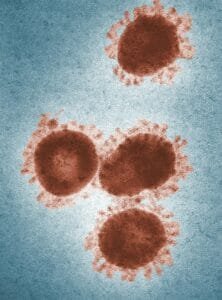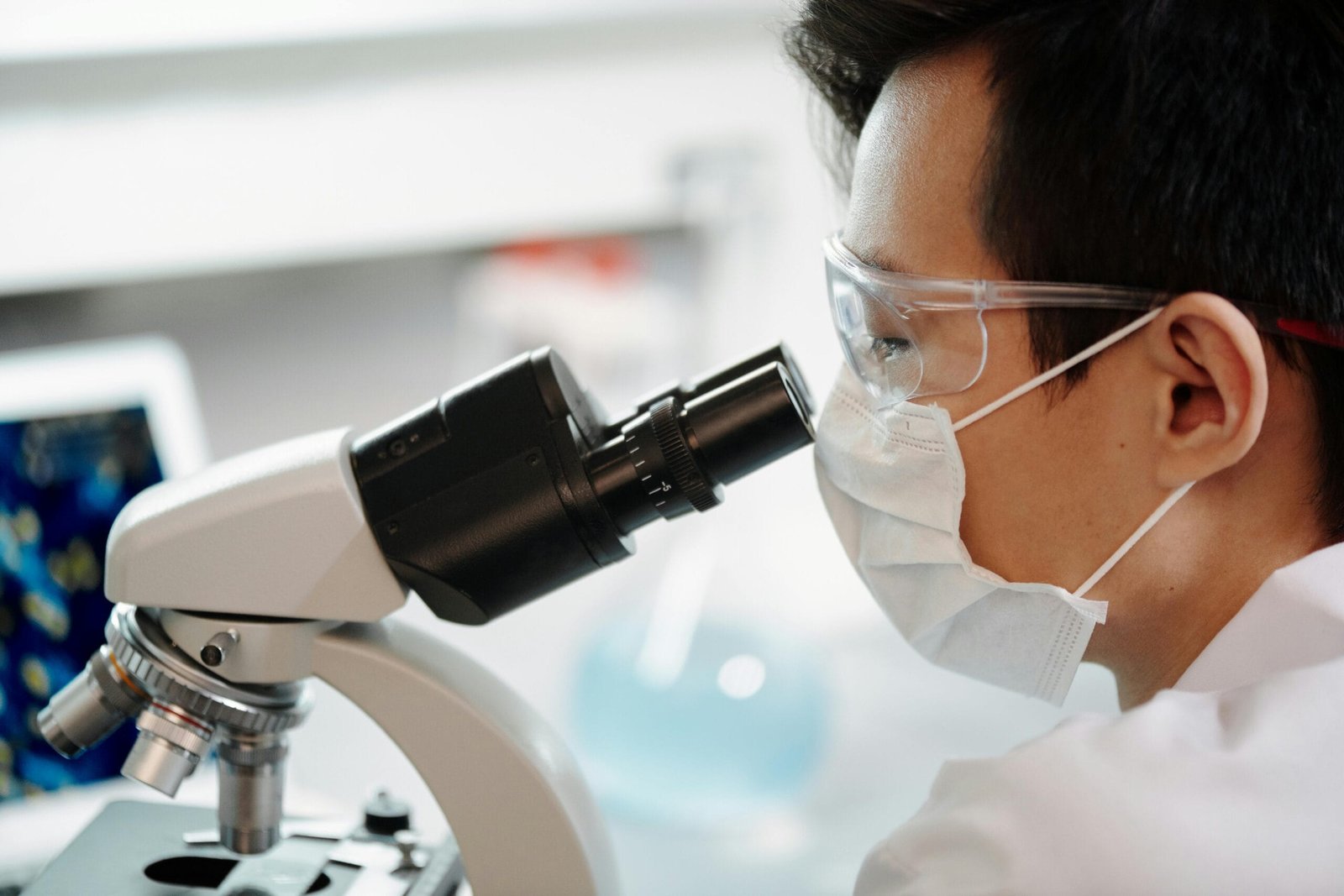What is Herpes Virus?
Herpes is a veritably common virus that affects millions of people worldwide. It is commodity that numerous people hear about but don’t completely understand. When we hear the words “herpes” and “spread”, it generally sounds like bad news still, there’s new stopgap. Scientists are working on a new kind of treatment that uses commodity called a” gene drive” to help fight the herpes contagion in a way we have no way seen ahead.

What is Gene Drive?
First, let’s break down what a” gene drive” is. Imagine you have a piece of DNA, which is like a set of instructions that tell your body how to work. A gene drive is a special type of DNA that can “copy and bury” itself into the DNA of other organisms. So, when a gene drive is introduced into a contagion, like the herpes contagion, it can spread snappily from one contagion to another. This might sound strange, but scientists are using this capability to try to stop the herpes contagion from causing problems in people. They are hoping that the gene drive will spread through herpes contagions in the body and stop them from causing infections.
How Herpes Affects People?
To understand why this is so important, we need to know further about herpes itself. Herpes is caused by two main types of contagions Herpes Simplex Virus type 1 (HSV- 1) and Herpes Simplex Virus type 2 (HSV- 2). These contagions be get blisters, generally around the mouth (cold blisters) or around the genitals. Utmost people suppose of herpes as just an annoying skin problem, but it can be get serious health issues for some. For illustration, some people who have herpes don’t indeed know they’ve it because they don’t get any symptoms. Others, still can have painful blisters, and these can come back again and again. The contagion stays in the body ever because it can” hide” in whim-whams cells and come back to life after being inactive for a while. Once someone has herpes, they’ve it for life. That’s why scientists are so eager to find a way to stop it. Right now, people can take antiviral specifics to keep the virus under control, but these specifics don’t get relieve of this fully. The contagion can go to sleep in the body for months or indeed times and also wake up to beget a new outbreak.
What Makes Gene Drives Special?
So, how does a gene drive work, and why is it such a big deal? Gene drives have the capability to spread rapidly through populations. This is what makes them so intriguing to scientists. Generally, when we pass on genes to our children, they get half of their DNA from the mother and half from the father. A gene drive, still, can force its way into a larger portion of the seed’s DNA, which means it can spread briskly than regular genes.
In 2020, two scientists, Marius Walter and Eric Verdin, started working on a design to see if they could produce a gene drive that would spread through herpes contagions. But rather of passing the gene drive from one generation of mosquitoes to the coming, as with malaria, they wanted the gene drive to spread from one contagion to another inside the same person’s body. They managed to produce a herpes virus in a lab that could jump from one virus to another, spreading the gene drive. They tested this idea in a petri dish, which is a small, flat dish that scientists use to grow cells or microbes in a lab. In their trial, the gene drive virus they created, was suitable to spread to other herpes virus in the dish.
How the Gene Drive Works?
The gene drive that Walter and Verdin created contains commodity called a” CRISPR” gene editor. CRISPR is a tool that allows scientists to cut specific corridor of DNA and edit them. In this case, the CRISPR tool in the gene drive cuts the DNA of other virus, and when those viruses try to repair the cut, they end up copying the gene drive’s DNA into their own genome. Think of it, if a virus is like a computer train, CRISPR is the tool that cuts into the train, and when the train is fixed, it automatically clones a new piece of information (the gene drive) into it. Once that happens, the new interpretation of the virus has the gene drive and can spread it to other contagions. This process allows the gene drive to spread more rapidly through a population of viruses.
Testing the Gene Drive in Mice
After their success in the lab, Walter’s team wanted to see if this would work in a living organism. They decided to test it in mice. The scientists infected the mice with two different contagions one was a herpes virus that had been designed to glow unheroic, and the other was the gene drive virus that included instructions for making a red fluorescent protein. This red protein would help the scientists see how well the gene drive was spreading. They looked at different effects in the mice under a microscope and saw both unheroic and red colors. This meant that the cells were infected by both viruses at the same time. Indeed more, over time, further and further of the unheroic virus was replaced by the red virus, showing that the gene drive was spreading successfully. In some corridor of the mice’s smarts, after just four days, up to 90 of the virus was red, meaning that utmost of the unheroic virus had been converted into the gene drive interpretation. This was a huge success for the scientists and a big step forward in the exploration.
Could the Gene Drive Work on Dormant viruses?
One of the biggest challenges in treating herpes is that the virus can go dormant, or “sleep,” in whim-whams cells. When the virus is dormant, it does not beget any symptoms, but it’s still there, hidden in the body, staying to extinguish. Scientists believe that if they can target the dormant virus, they might be suitable to stop it from reactivating and causing new outbreaks. Walter’s team wanted to know if their gene drive could spread to these dormant viruses. In trials with mice that had been preliminarily infected with herpes, they showed that the gene drive could indeed reach these “sleeping” contagions. This is an important step because any future remedy that uses a gene drive to treat herpes will need to be suitable to target both active and dormant viruses.
The Future of Gene Drives in Medicine
So, what’s coming? While the results of these studies are instigative, we’re still a long way from using gene drives to treat herpes in people. The exploration so far has substantially been done in the lab and in mice, and there are numerous challenges to overcome before this technology can be used in humans. One of the main issues is safety. Scientists need to be absolutely sure that the gene drive won’t beget any detriment to people. For illustration, they need to make sure that the gene drive virus does not spread in ways that could beget other conditions. They also need to insure that the gene drive does not spread from person to person, which could lead to unintended consequences. Another challenge is that some viruses in the study came resistant to the gene drive. This means that indeed though the gene drive was supposed to spread through all the herpes viruses, some of them set up a way to avoid being affected. However, it could make the treatment less effective, if viruses come resistant to the gene drive, still, Walter’s team is not too upset about this.
There are ways to get around resistance, similar as targeting different corridor of the viral genome. The scientists believe that with further exploration, they can find a result. A long road ahead although it could be times before gene drives are ready to be used as a treatment, experimenters like Walter and Jerome are auspicious about the future. They hope that one day, they will be suitable to produce a gene drive that does not just change the color of a virus, but actually turns a dangerous virus into bone that’s less dangerous or indeed inoffensive. The ultimate thing is to develop curatives that can help people suffering from herpes. Right now, the technology is still in its early stages, but the progress being made is promising. However, it could open the door to new treatments for numerous other conditions as well, if scientists can figure out how to safely use gene drives in viruses.
Conclusion
In summary, the idea of using gene drives to fight herpes is an instigative and groundbreaking approach. While current treatments can help control the virus, they don’t get relieve of it fully. The stopgap is that by using a gene drive, scientists can one day produce a treatment that not only stops the contagion from causing complaint but also prevents it from being passed on to others.
There are still numerous challenges to overcome, but the exploration is moving forward, and the future looks bright. Interestingly, similar gene editing techniques have already shown promise in controlling bacteria like E. coli, offering hope for broader applications. As scientists continue to explore this new technology, we may be on the verge of a major advance in the way we treat viral infections, not just for herpes but for numerous other conditions as well.
